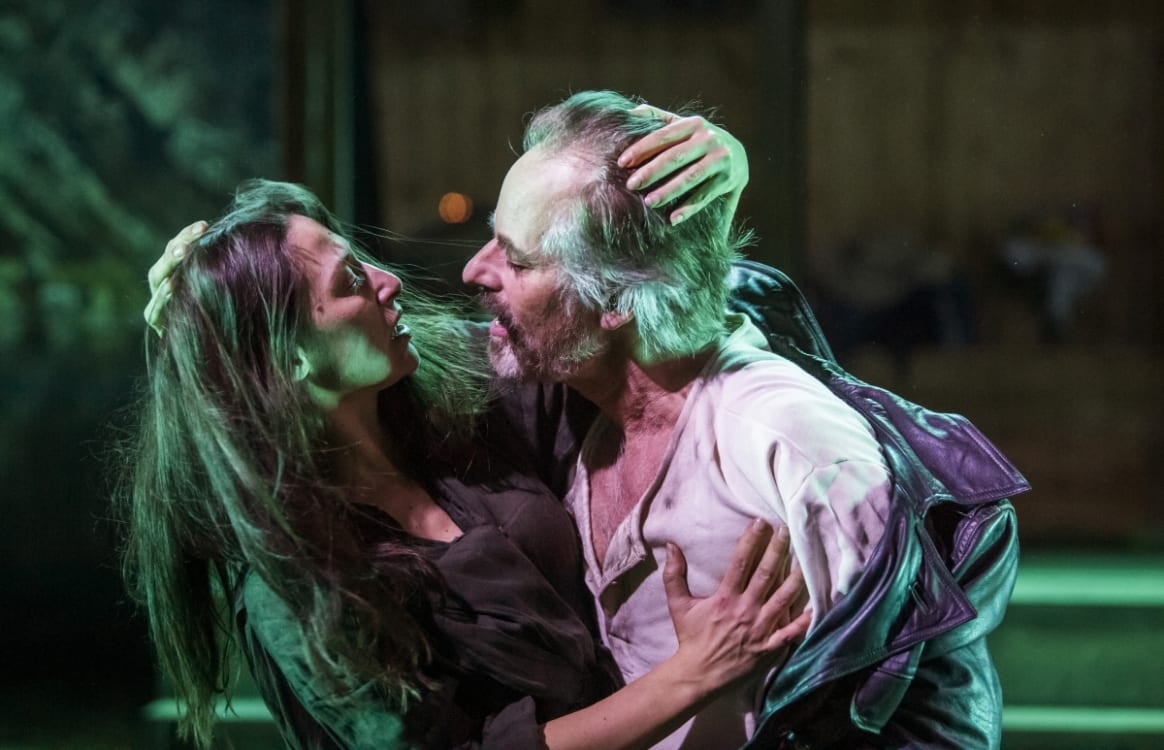This is a bilingual production, Norwegian and English, of Ibsen’s 1888 play, The Lady From the Sea. A challenge for director and cast, particularly as this drama, is in the spoken words rather than in the scenes. It offers English audience an opportunity to hear part of the dialogues in Ibsen’s own language. It sounds poetic and it is a treat.
When the play was premiered 130 years ago, it was not an instant success and very few productions since have been hailed as great. Marti Moun Aune, the Norwegian director, intriguingly divides and sections, seamlessly, the dialogues to alternate between the two languages by tweaking the storyline slightly. The usage of the Norwegian language adds a new dimension to the emotions conveyed by the characters. The surtitles are projected in a way that offers an opportunity to read the translations and watch the drama on stage.
In this production Dr Wangel (Adrian Rawlins) and his two teenage daughters from the first marriage, Bolette (Marina Bye) and the rebellious younger, Hilda (Molly Winsor) are English and so is Lyngstrand (Edward Ashley), a guest, who came to breathe the mountain air and regain his strength. This geographical relocation helps justify the English dialogues. The family moves to Norway and settles in a remote place by a fjord, to satisfy Ellida Wangel (Pia Tjelta), the second wife who needs to be by the sea, close to a route to freedom. Ellida carries deep grief following the loss of her five-month-old baby, some three years earlier. She also yearns for the seaman, her soul mate, the stranger.

Once Ellida’s old friend, and Bolette’s former tutor, Arnholm (Kåre Conradi) arrives, the conversations liven and the Norwegian language dominates the stage. It is rather effective and more dramatic to hear the communications uttered in the language in which it was originally written. Ellida transforms from a dull and uninspired character to a feisty and more believable one. The communication between the two gains more meaning and reveals much of Ellida’s past. It offers a glimpse into her inner turmoil and grief. She reveals her preoccupation with a former lover, a seaman, presumed drowned in a shipwreck, and the loss of her baby some three years earlier. Tjelta’s performance, when she uses her native tongue, conveys new meaning to the text and her character.
Kåre Conradi’s Arnholm has too much vitality and exudes male confidence to convince the audience that he is a lonely tutor with a thinning hairline, yet his presence on stage is fresh and helps stimulate life in the lifeless household. Marina Bye’s Bolette is best in the scene where Arnholm proposes to her. The transition from exuberant response to weary submission is rather moving. Molly Winsor’s Hilda draws laughter from the audience. Adrian Rawlins‘s Dr Wangel, is moderately convincing in his passionate attempts to please his wife. Edward Ashley, making his stage debut, is a superb Lyngstrand. He is naïve, awkward and painfully immature when attempting to woo. Ashley beautifully articulates a tragic-comic character that you cannot but forgive and love.
This production successfully portrays the disunity in Wangel’s family. The dramatic frankness is embedded in scenes in which Ellida communicates her internal thoughts and feelings. Ellida’s honest communication with Arnholm, her physical response to the Stanger (Øystein Røger) and reaction to her husband and stepdaughters are at the heart of the play. The totality of the performances falls short of the expected mark despite the music, composed by Nils Petter Molvær, which helps to generate the dramatic effect that the performance fails to convey.
Last but not least is the set and costume designer, Erlend Birkeland. The set is simple yet very effective. A picture of looming mountains, French doors leading to a house we never see, and at the forefront expansive sand, creating a sense openness and is in contrast to the house which looks as if it is embedded in the mountain.

